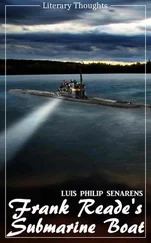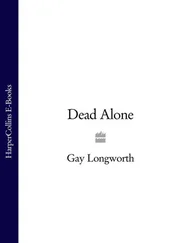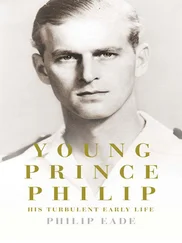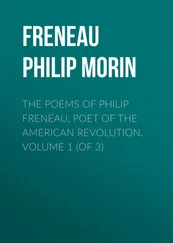The news was greeted with relief by many, but the predominant reaction was sorrow. This was only partly a result of deliberate image-building, which presented him as a great war leader with an affinity to Ivan IV in his youthful, conquering phase. Stalin was genuinely popular, despite — even because of — the blood he had shed. As a British historian writes, ‘Unpalatable as it may be… for liberals both East and West to admit that tyranny and terror can have a certain popular appeal, to pretend otherwise does not help us understand these phenomena’. 10But with Stalin gone the atmosphere slowly changed.
The telephone rang in a flat overlooking Suvorov Avenue in Leningrad. A young woman answered. A harsh voice, sounding like a demon from Hades, asked rudely who had answered the call. She gave her name. Then the voiced rasped out her father’s name. Her father had been arrested in the 1930s; there had been no news of him since. He would arrive within the hour, barked the caller, and hung up. Minutes later there was a knock at the door. Her father, long feared dead, had returned. 11There were many such reunions in this period — and many sadder resolutions too.
Fears of another period of terror, which had grown again with the alleged ‘Doctors’ Plot’ of 1952, slowly cleared. It was three years after Stalin’s death, in February 1956, that a new Party Secretary, Nikita Khrushchev, addressed a secret session of the Twentieth Congress of the Communist Party of the Soviet Union. His text was soon leaked, no doubt deliberately, through a fraternal Polish delegate. And so the shattering news reached the Soviet people and the world: Khrushchev had denounced Stalin for making costly mistakes and ordering unnecessary killings. From then on changes came faster.
The Party line began to ease both in domestic affairs and in foreign policy. The strict controls favoured by Stalin could not be sustained indefinitely. In the Soviet Union itself economic plans were soon altered to provide more consumer goods, and Stalin’s demise excited greater expectations. But not all satellite leaders followed the new line, and a few weeks later workers in East Germany rebelled against excessive work norms imposed by Walter Ulbricht, the Party leader. Three years later a major revolt in Poland was narrowly averted by bringing the popular Wladyslaw Gomulka to power and raising living standards, but later that year, 1956, the forces of protest in Hungary produced a full-scale revolution which was suppressed only by the application of considerable force.
It was noted, however, that although the American-run Radio Free Europe had encouraged the rising in Hungary, Western forces did not intervene to help the insurgents. In the longer term it also became clear that, although collectivization was reimposed in Hungary (though not in Poland), it was done in a way that won acceptance. And if the Soviet regime was learning how to keep power through the judicious use of concession as well as repression, it was also proving adept at extending its influence abroad by the careful dispensation of aid. India, in particular, was courted. In 1953 a five-year trade agreement was signed with it, and two years later the Soviets undertook to build a steel plant there. 12They also provided oil-prospecting equipment and a million tons of steel to assist India’s industrialization at a crucial stage, helped with mineral prospecting, and provided other technical aid. Economic help was paralleled by high-profile gestures of political co-operation. India’s leader Pandit Nehru was feted in Moscow; Khrushchev was festooned with garlands in Delhi. 13
Burma, Cambodia, Afghanistan and several African and Arab countries, especially Egypt, were also targeted as recipients of Soviet largesse and influence. Competition with the West for influence in non-aligned countries could be fierce, however, and it was expensive. In 1954 Moscow agreed to buy Burma’s entire rice crop when it was unable to sell it elsewhere; it also bought Iceland’s fish surplus at the time of the ‘cod war’ with Britain. But great powers were expected to act thus, and aid was an important element in a bigger, worldwide, struggle.
The West made a concerted effort to confine the Soviet Union to its sphere by building a series of military alliances: NATO to protect Western Europe and the Mediterranean; the Baghdad Pact which set up CENTO (an alliance which included Iran and Pakistan) for western Asia; and the South-East Asia Treaty Organization, which also included Pakistan. Moscow reacted sharply: Marshal Zhukov, now Soviet defence minister, warned the United States against interfering on the Soviet Union’s southern frontier. Russia had possessed a hydrogen bomb since 1953, but in 1957 NATO, led by the United States, raised the stakes still higher by introducing nuclear warheads and building bases for ballistic missiles of intermediate range. The Soviet reaction seemed intended to wrong-foot its rival: it suspended nuclear tests, undertook not to use nuclear weapons under any circumstances, and dropped plans to deploy them in East Germany, Poland and Czechoslovakia. It also undertook to scale down its conventional forces to a level that would maintain the existing balance between East and West. 14This non-belligerent stance made for good public relations, but was deceptive. The Soviets proceeded with the development of their own inter-continental ballistic missiles, and test-fired one later that year. Then, in October, to the astonishment of much of the world, they launched the first space rocket to orbit the earth.
Soviet influence in the world now grew at a tremendous rate. Following a coup d’état, Iraq was persuaded to leave the Baghdad Pact and legalize a Communist Party. In 1959 Soviet engineers arrived in Egypt, which would not permit a Communist Party, to start work on a huge hydroelectric and irrigation project, the Aswan Dam. This scheme, intended to revolutionize Egyptian agriculture, soon came to symbolize Soviet prestige in Africa and the Middle East. The same year Fidel Castro took control of Cuba and, encountering difficulties with the United States, offered himself to Moscow as a protege. At the beginning of that year, in the course of announcing a new Seven Year Plan, Khrushchev boasted that by 1970 the Soviet Union would have caught up with the United States in industrial production. ‘By that time, or perhaps even sooner, the Soviet Union will advance to the first place… both in absolute volume of production and production per head.’ 15
If the claim was credible, the implications were awesome. In 1961 Iurii Gagarin orbited the Earth, becoming the world’s first traveller in space. Given the technological competence demonstrated in the Soviet space and nuclear programmes, the economic pre-eminence that Khrushchev forecast implied military pre-eminence, and promised pre-eminent political influence in the world too. Furthermore, the Soviet Union had what the United States lacked: a working model of empire with a directly controlled inner sphere; a sphere of indirect but nonetheless effective control, as in Mongolia, North Korea and Eastern Europe; and, beyond that, a sphere of influence including such diverse states as Cuba, the United Arab Republic, North Vietnam and Ghana. Its arsenal of influence also included channels for cultural, scientific and professional exchange as well as responsive Party organizations round the globe. And in the shorter term, at least, Khrushchev’s claim showed every sign of proving justified. Six years later gross national product of the Soviet Union had increased by nearly 60 per cent and industrial output by 84 per cent. 16
These were heady days for Khrushchev. He participated in an impromptu televised debate with Vice-President Nixon, publicly upbraided President Eisenhower for ordering US spy-planes to overfly the Soviet Union, and put the captured pilot of one which had been shot down on public display. In fact the United States and the Soviet Union were already on the way to convergence. This development, had its costs, however. Mao did not favour rapprochement, and denounced it. This fractured Communist solidarity. It also lost the Soviets their submarine base at Valona on the Adriatic, for Albania sided with China. Distant Beijing seemed preferable to Moscow as a protector of so small and vulnerable a state. Then Kennedy was elected president of the United States and Khrushchev had to face a double standoff with him over Berlin and Cuba.
Читать дальше





![Stephan Orth - Behind Putin's Curtain - Friendships and Misadventures Inside Russia [aka Couchsurfing in Russia]](/books/415210/stephan-orth-behind-putin-s-curtain-friendships-a-thumb.webp)





